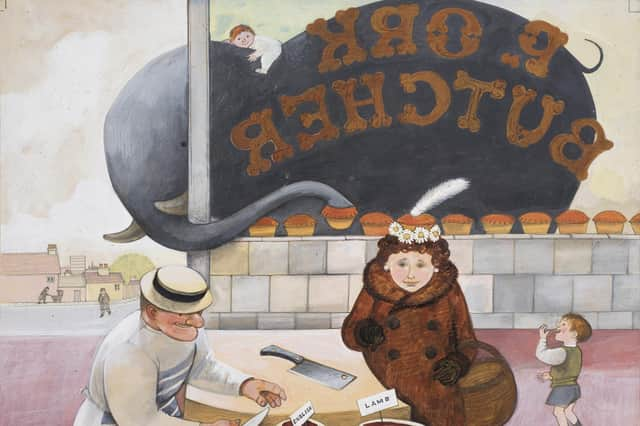Posthumous celebration of Raymond Briggs in East Sussex


Spokeswoman Nicola Jeffs said: “A new exhibition featuring never-seen-before items and artworks from one of the UK´s most beloved author illustrators will open in 2024 in the part of East Sussex that he made his home. Bloomin’ Brilliant: The Life and Work of Raymond Briggs at Ditchling Museum of Art + Craft is a highly personal show that will bring together 30 items from the late author´s estate with over 100 original artworks from his 60-year career,
“The exhibition joins up with the acclaimed currently-touring show from Quentin Blake Centre for Illustration (Raymond Briggs: A Retrospective) and is the first specifically curated show following the death of the author. The exhibition includes work from Briggs’ pioneering titles including The Snowman (1978), Father Christmas (1973), Fungus the Bogeyman (1977) and When the Wind Blows (1982), plus the autobiographical graphic novel Ethel and Ernest (1998), delving into the origin and creation of these classic images and stories. Also on show are his drawings, hand-lettered typography and page designs from his earliest commissions to his 2004 book The Puddleman.”
Advertisement
Hide AdAdvertisement
Hide AdNicola added: “For the first time following the author´s death in 2022, this exhibition will also offer a deeply personal view of the items and objects that surrounded the author in his Sussex home, which was just a mile down the road in the village of Westmeston. This will include Briggs´ own writing and drawing desk which he used for over 40 years and where he first originated some of his most famous works. The items also give a sense of who Raymond Briggs was and his playful response to his own fame. A framed Private Eye edition from 1993 riffing on his most iconic work, a faux blue plaque outlining his commitment to practical jokes, and a 1997 note from his partner´s granddaughter detailing that ‘Raymond is not a normal person’ – an utterance that would also make it onto Brigg´s own gravestone – are amongst the intriguing items that will be shared with the public. Images from his work also adorn several household items with a pair of extravagant cupboard doors featuring life-sized paintings of his parents Ethel and Ernest who were also the focus of his 1996 graphic novel documenting their lives.
“The title character from 1977´s Fungus the Bogeyman makes several appearances whether sewn into a blue velvet armchair, being used as a back support for a wooden chair, or simply as a repurposed book advertising stand. Visitors will be able to grasp how an author can literally live with their creations.
“A selection of the private correspondence that Briggs kept over the decades will also be included from the children that enthusiastically wrote to him to an adult from Pennsylvania who in 1975 admonished him for portraying Santa Claus as ‘performing an act of personal hygiene’, as well as the author´s own thoughts on the industry he worked in. Never-seen-before artworks will also be included specifically at Ditchling including artwork for Father Christmas on Holiday. These will all join hundreds of artworks that show why Raymond Briggs was – and still is – viewed as one of the most exceptional draughtsman and storytellers that this country has produced, with innovative journeys of both the magical and seemingly mundane, from monsters, flying snowmen, and miniscule humans to heartfelt relationships, real-life war and a hard-working Father Christmas.”
Steph Fuller, director, Ditchling Museum said: “It has been a privilege to be invited by Raymond Briggs’ estate to visit his home and select objects for this exhibition. Being in his studio amongst his drawing materials, family photographs and notes to self, it feels as though he might have just stepped out and could return at any moment. I hope we’re able to convey something of that feeling to visitors.”